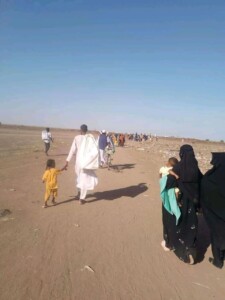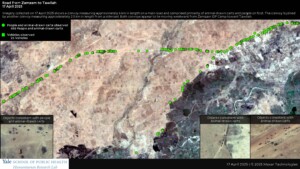More Chadian refugees to return from Darfur
Yesterday more than 4,000 Chadian refugees from Mukjar and Um Shalaya camps in Central Darfur bean return operations after conditions have become favourable for return to Chad.
 Sudanese refugees based in Chad on the first organised go-and-see visit to Darfur Oct 2017
Sudanese refugees based in Chad on the first organised go-and-see visit to Darfur Oct 2017
Yesterday more than 4,000 Chadian refugees from Mukjar and Um Shalaya camps in Central Darfur bean return operations after conditions have become favourable for return to Chad.
Sudan’s President Omar Al Bashir last year instructed the acceleration of work on the voluntary repatriation of Sudanese refugees in Chad and the return of Chadian refugees in Sudan.
Mujibelrahman Mohannad Yagoub, the assistant refugee commissioner for Darfur states, said that the return began yesterday to Moudeina in the Sila region of eastern Chad in cooperation with the UN Refugee Agency (UNHCR).
He said that a border conference to be held next week will contribute to the return of Sudanese from Chad.
He explained that the number of Chadian refugees in the state is 9,000 while the number of Sudanese expected to return from Chad before the rainy season is 24,811.
The current return programme was announced by the UNHCR in December 2017.
A first group of approximately 301 Chadians have left Um Shalaya camp in Central Darfur for Moudeina in the Sila region of eastern Chad.
The refugee agency and the governments of Sudan and Chad provided transport and additional assistance to the refugees.
The UNHCR expected that by the end of 2017, some 1,000 refugees will have returned to Moudeina and the agency plans to return as many as 4,000 refugees to other sites in Chadin 2018. The returnees will receive 'return packages' to help them re-establish their homes and livelihoods.
Sudanese refugees
Chad is itself an important refugee host country with over 300,000 people from Darfur living in camps in the east of the country.
In October 2017, Sudanese refugee leaders returned to their home villages for the first time on go-and-see visits organised by UNHCR. After more than a decade in exile, Sudanese refugees begin to look more seriously at returning to Darfur. In Chad the refugees face dwindling humanitarian support, with cuts to food rations, and limited livelihood opportunities and access to land. There are also concerns about the language of instruction for their children’s education.











 and then
and then